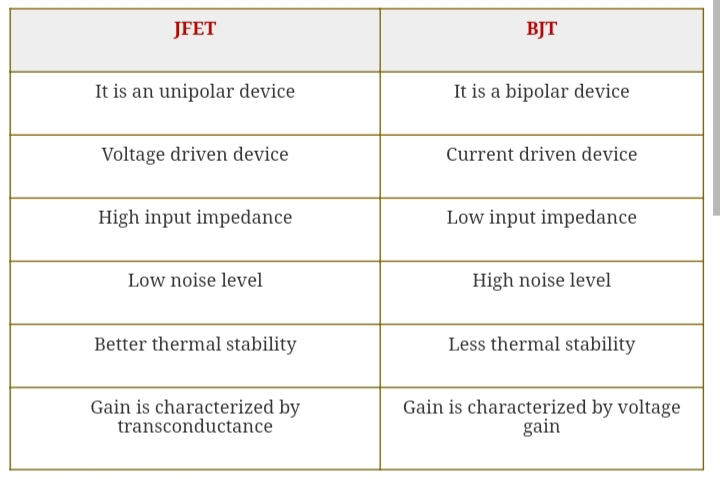FIELD EFFECT TRANSISTOR
A
FET is a
three-terminal unipolar semiconductor device. It is a voltage controlled device unlike a bipolar junction transistor. The main advantage of FET is that it has a very high input impedance, which is in the order of Mega Ohms. It has many advantages like low power consumption, low heat dissipation and FETs are highly efficient devices. The following image shows how a practical FET looks like.
The FET is a unipolar device, which means that it is made using either p-type or n-type material as main substrate. Hence the current conduction of a FET is done by either electrons or holes.
Features of FET:
The following are the varied features of a Field Effect Transistor.
.Unipolar − It is unipolar as either holes or electrons are responsible for conduction.
.High input impedance − The input current in a FET flows due to the reverse bias. Hence it has high input impedance.
.Voltage controlled device − As the output voltage of a FET is controlled by the gate input voltage, FET is called as the voltage controlled device.
.Noise is low − There are no junctions present in the conduction path. Hence noise is lower than in BJTs.
.Gain is characterized as transconductance. Transconductance is the ratio of change in output current to the change in input voltage.
.The output impedance of a FET is low.
Advantages of FET
To prefer a FET over BJT, there should be few advantages of using FETs, rather than BJTs. Let us try to summarize the advantages of FET over BJT.
Applications of FET.FET is used in circuits to reduce the loading effect.
.FETs are used in many circuits such as Buffer Amplifier, Phase shift Oscillators and Voltmeters.
FET Terminals:
Though FET is a three terminal device, they are not the same as BJT terminals. The three terminals of FET are Gate, Source and Drain. The Source terminal in FET is analogous to the Emitter in BJT, while Gate is analogous to Base and Drain to Collector.
The symbols of a FET for both NPN and PNP types are as shown below
Types of FET:
There are two main types of FETS. They are
JFET and
MOSFET. The following figure gives further classification of FETs.






